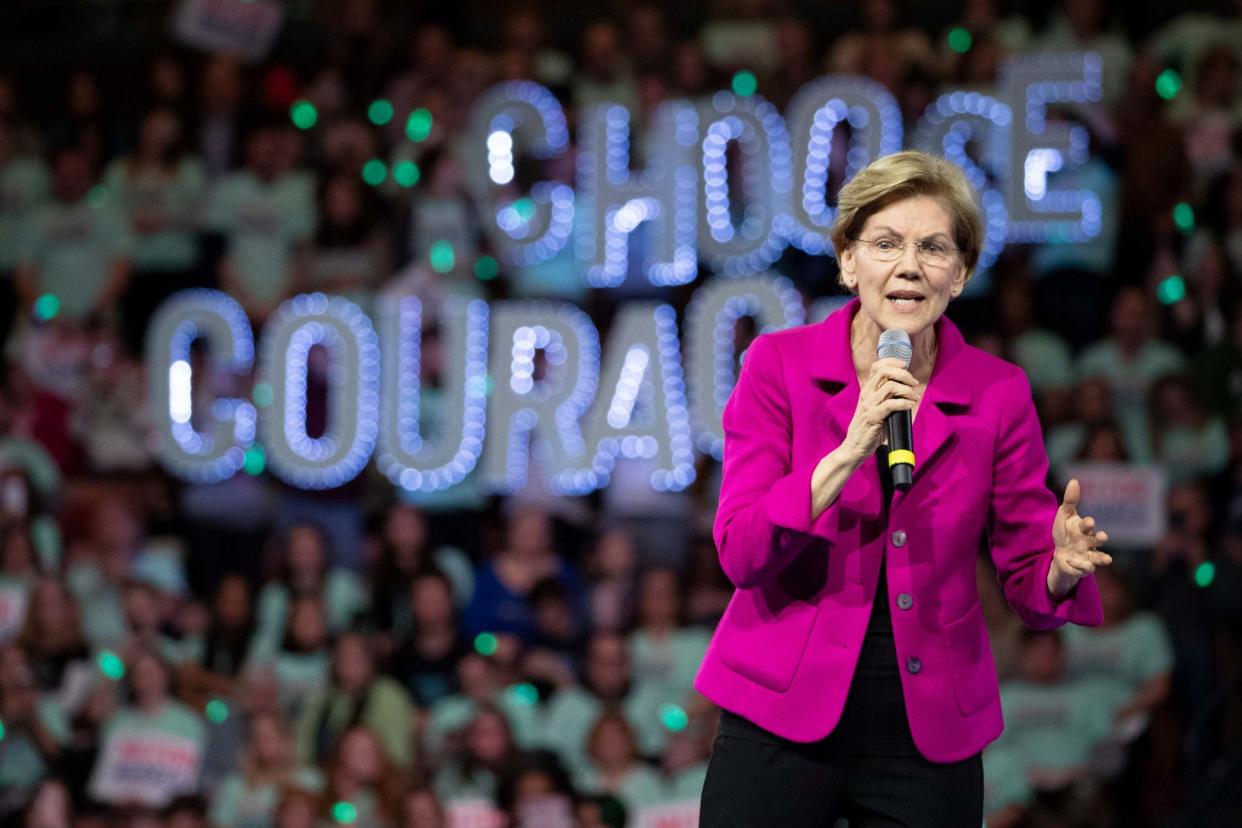If you want equality, start with the politics of power dressing

Consider the navy suit. Worn with a pale shirt, dark shoes and a block-colour tie. It is the uniform of British politics. Respectable, dependable, even boring. It is a choice that is so common it doesn’t look like a choice at all. And it’s only available to men.
The closest version for women is a pantsuit, as worn by Hillary Clinton, but this isn’t a neutral outfit. It is often read as dowdy, aggressive, unfeminine — an attempt to claim men’s fashion along with men’s power. Ballbusters and battleaxes wear pantsuits.
OK, how about a skirt suit? Except that invites comments on your calves — “Never mind Brexit, who won Legs-it?” as the Daily Mail once captioned a picture of Nicola Sturgeon and Theresa May — and still feels like a riff on a fundamentally male template.
It might sound trivial, but the ubiquity of the navy suit makes life easier for male politicians. They have an option that doesn’t make a statement about them beyond, “I fit in”. The 10 minutes they don’t spend hesitating about whether to wear tights, or whether their bra is visible through their top, or whether their skirt will ride up when they sit down, or whether they’re showing too much skin — well, that’s 10 minutes more time for everything else.
In February 1920, Nancy Astor became the first woman to give a speech in the Commons, acknowledging that “it was very difficult for some honourable members to receive the first lady MP into the House”. A hundred years later, women are still playing politics on a higher difficulty setting. “The moment a woman steps forward and says, ‘I’m running for office’, it begins,” wrote Clinton in her memoir What Happened. “The analysis of her face, her body, her voice, her demeanour; the diminishment of her stature, her ideas, her accomplishments, her integrity.”
The problems are both big and small. Many female politicians worry about their voices. “It is easier to command a debate and to command the House of Commons if you have a deeper voice and deeper pitch to your voice, just because of the acoustics of the place,” said Yvette Cooper in 2013.
Women receive far more online abuse, on average, than their male colleagues. And black female MPs in particular have spoken about being mistaken for cleaning staff (as Labour’s Dawn Butler was), or each other.
It sounds trivial but the ubiquity of the navy suit makes life easier for male politicians — it says “I fit in”
It is harder for a woman to present herself as exceptional — which political leaders have to be — without people wondering if she’s “getting above herself”. Isn’t it a bit ... selfish to want to rule the world? Who’s looking after her kids?
For a male politician, a partner and family are humanising accessories; for a woman, they are the source of well-meaning but intrusive questions about her commitment to the job. (For a childless woman, their absence can be used to imply that she isn’t a fully-rounded human being.)
One of the strangest ways female politicians are hobbled by sexism is by our belief that although we aren’t sexist, everyone else is. Look at the US. Since Clinton, a well-qualified but widely disliked female candidate, lost to Donald Trump in 2016, many liberal voters now fret about whether their fellow citizens would find a woman less “electable”. A 2019 Ipsos poll found that 74 per cent of Democrats and independents said they were personally comfortable with a female president, but 33 per cent thought their neighbours would not be.
Talking about sexism can become a self-fulfilling prophecy: our side desperately wants to beat the other guy, so we can’t risk picking a woman. This year’s strongest female candidate, Elizabeth Warren, has struggled to gain momentum despite her folksy style, command of policy detail and glittering CV.
Perhaps some of that nervousness is playing out in the Labour leadership election, too. In the 120 years of the party’s existence, it has never had a woman leader — a trend which looks set to continue, despite four women and one man running for the position this year.
While Keir Starmer is undoubtedly an impressive candidate, there is also a sense that he is a “safe” option. Is that just about his message of unity — or does he get a boost from looking like our existing template for power? His rival Rebecca Long-Bailey seems to think so: she told a meeting in Yorkshire that “we don’t win elections by just putting a suit on and trying to look like the most electable person in the room”.
Of course, it’s not all misery and despair. When researching my history of feminism, Difficult Women, I discovered many terrifying, inspiring, flawed, impressive women who blazed a trail in politics. Take the Labour MP Maureen Colquhoun, who fought against the “maleocracy” of the Commons and dared to live openly as a lesbian in the Seventies. And today, the Scottish National Party has a female-dominated cabinet at Holyrood, while women make up a majority of Labour and Liberal Democrat MPs at Westminster.
No male MP would now say, as Winston Churchill reportedly did of Nancy Astor, “I find a woman’s intrusion into the House of Commons as embarrassing as if she burst into my bathroom when I had nothing with which to defend myself, not even a sponge”. (Astor is supposed to have replied: “Winston, you’re not handsome enough to have worries of that kind.”)
In the century since gaining the right to the vote, women have steadily gained a voice. With each new generation, it ought to become a little easier to imagine women in power. The big breakthrough will come when a female politician can be as unremarkable as a man in a navy suit.
Difficult Women: A History Of Feminism In 11 Fights is out now

 Yahoo News
Yahoo News 
